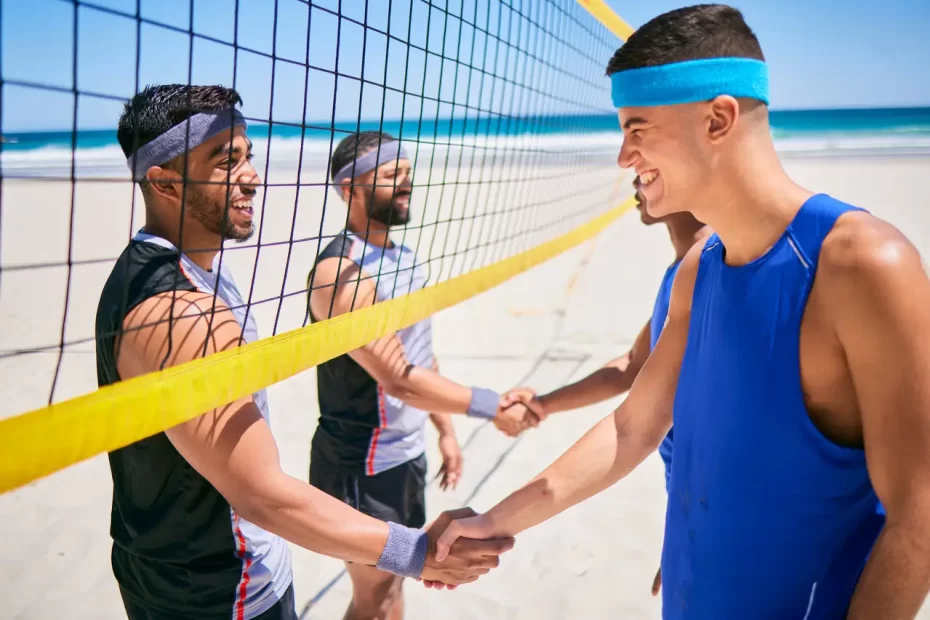Volleyball is an immersive team sport that demands cooperation between numerous individuals. As players develop deep emotional bonds with one another on and off the court, these lasting bonds often transcend volleyball altogether.
Regular exercise such as volleyball can increase your aerobic capacity, meaning your heart and lungs are able to send more oxygen directly to your muscles for improved joint health and overall physical performance. This results in better joint health and overall physical performance.
1. Start with a partner
Volleyball engages multiple muscle groups for an excellent total-body workout, strengthening and toning chest muscles, arms, shoulders, wrists, abdomen core and legs as it develops strength in each. Regular physical activity may help lower disease risks while improving immune system functionality.
Beach volleyball is an engaging, fast-paced sport that demands team members work as one to pass and set the ball into position for attacking. Communication among teammates may be achieved using hand signals, making this challenging but ultimately rewarding when executing points successfully.
Volleyball provides young people with an opportunity to develop teamwork and be accountable for their actions – lessons that will serve them in many other aspects of life.
2. Start with a block
Blocking in volleyball is an essential defensive skill that prevents the ball from crossing over the net. Blockers require excellent jumping and footwork skills in order to arrive on time to stop it; in addition, they should know when it’s appropriate to drop off or stay up there as part of their read of play.
Team beach voley exercises can be done at any outdoor venue equipped with nets and courts. It may be wise to choose an unpopular time/place when planning on playing, so as not to interfere with other people using the beach at that time. Most beaches provide day rental for nets and balls so this exercise shouldn’t pose too many difficulties!
3. Start with a serve
Beach volleyball players understand the importance of starting each point off right and serving is an effective way to do this. Players should come ready and plan a return plan in case their serve goes back over their head.
To deliver a successful serve, the team must communicate and move as one unit. While this may be challenging at times, it is an essential skill that needs to be honed within any successful team.
An effective way to develop communication and coordination skills among players is with drills that force them to collaborate together on serving, before working in unison to return the ball together. Such drills also help them form patterns of movement which they will find beneficial when playing actual matches.
Block drills can also be useful to your team. By having members pass to each other before moving together to block, these exercises help players improve their passing skills while teaching them how to read the game more efficiently.
NTDP programs offer young athletes an incredible opportunity to train alongside and compete against some of the greatest beach volleyball athletes worldwide. It provides them with an opportunity to become familiar with this dynamic sport as well as prepare them for professional level competition and gain some exposure in it.
NTDP provides young beach players with many opportunities to compete on both a national and international stage, giving them greater chances of being recognized by college coaches and entering an excellent program.
4. Start with a spike
Spiking volleyball can be an extremely powerful offensive move that helps your team win points. A spike is made when the ball is violently struck at its target on the opponent’s side of the net by forceful hitting it toward it; to successfully spike, wait for your setter to set close to the net before jumping in to attack it; many teams use code words or special positioning signals to notify teammates when someone plans on spiking the ball.
Start practicing with an imaginary ball to improve your spiking, with a wall in front of you to help keep things still and steady. As your speed and accuracy improve during practice, so will game play itself.
Exercise to strengthen lateral movement skills. Jumping up and down on the spot without much knee bending is another effective lateral movement exercise, helping reach high-pitched balls which you might otherwise miss jumping only from your feet.





